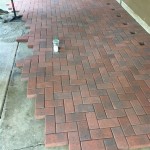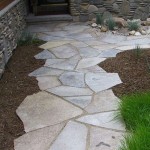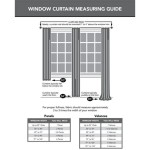How To Make a Patio Area On Grass
Creating a patio area on grass can significantly enhance the functionality and aesthetic appeal of an outdoor space. A well-designed patio provides a designated area for relaxation, entertainment, and dining. This article provides a comprehensive guide on how to construct a patio area directly on grass, covering essential planning, preparation, and installation steps.
Planning and Design Considerations
The initial stage of patio construction involves meticulous planning and design. Several factors must be considered to ensure the patio meets the intended purpose and complements the surrounding landscape. The first step is to determine the size and location of the patio.
Consider the intended use of the patio. A small patio may suffice for a bistro set, while a larger patio is necessary for outdoor dining and seating areas. The location should consider sun exposure, drainage, and proximity to the house. A south-facing location will receive the most sunlight, while a north-facing location will be shadier. Proper drainage is crucial to prevent water accumulation and potential damage to the patio.
Next, select the appropriate materials. Common patio materials include pavers, stones, gravel, and composite decking. Pavers and stones offer durability and aesthetic appeal, while gravel provides a more rustic and cost-effective option. Composite decking offers a low-maintenance and weather-resistant surface. The choice of material should align with the overall design aesthetic and budget.
Creating a design plan is essential. This plan should include the dimensions of the patio, the layout of the materials, and any additional features such as steps, retaining walls, or planting areas. Use graph paper or design software to create a visual representation of the patio. This will help visualize the final outcome and identify any potential issues before construction begins.
Consider the necessary permits and regulations. Some municipalities require permits for patio construction, especially if the patio exceeds a certain size or alters the existing drainage patterns. Check with the local building department to ensure compliance with all applicable regulations.
Preparing the Site
Proper site preparation is critical for the stability and longevity of the patio. Inadequate preparation can lead to settling, uneven surfaces, and premature deterioration. The first step is to remove the existing grass and topsoil from the patio area.
Use a sod cutter or shovel to remove the grass. Cut the sod into manageable strips and dispose of it properly. Remove approximately 4 to 6 inches of topsoil to create a level base for the patio. This depth may vary depending on the type of material being used and the local soil conditions.
Next, install a weed barrier. This fabric prevents weeds from growing up through the patio surface. Overlap the edges of the weed barrier by at least 6 inches and secure it with landscape staples. This step is essential for maintaining the appearance of the patio and preventing unwanted vegetation.
Compact the soil using a plate compactor or hand tamper. This will create a firm and stable base for the patio. Compacting the soil is particularly important in areas with loose or sandy soil. Ensure the soil is evenly compacted to prevent settling and uneven surfaces.
Install a base layer of gravel or crushed stone. This layer provides drainage and helps to distribute weight evenly. The depth of the base layer should be between 4 and 6 inches, depending on the type of material being used and the load-bearing capacity required. Spread the gravel evenly and compact it thoroughly using a plate compactor.
Level the base layer using a level and a screed board. This will ensure the patio surface is even and consistent. A slight slope can be incorporated to facilitate water runoff. A slope of approximately 1/4 inch per foot is generally sufficient for proper drainage.
Installing the Patio Surface
The installation of the patio surface is the final step in the construction process. The method of installation will vary depending on the type of material being used, but the basic principles remain the same.
For paver or stone patios, begin by laying a thin layer of sand over the gravel base. This sand layer provides a level surface for the pavers or stones and helps to prevent them from shifting. Use a screed board to level the sand and ensure a consistent depth of approximately 1 inch.
Lay the pavers or stones in the desired pattern. Use a rubber mallet to gently tap each paver or stone into place. Maintain consistent spacing between the pavers or stones. This spacing can be achieved using paver spacers or by eye. Ensure the pavers or stones are level with each other and with the surrounding landscape.
For gravel patios, simply spread the gravel evenly over the base layer. Use a rake or shovel to distribute the gravel and ensure a consistent depth. Compact the gravel using a plate compactor. Add additional gravel as needed to maintain the desired depth and ensure proper drainage.
For composite decking patios, construct a frame using pressure-treated lumber. The frame should be level and securely anchored to the ground. Install the composite decking boards according to the manufacturer's instructions. Use screws or hidden fasteners to attach the boards to the frame. Ensure the boards are properly spaced to allow for expansion and contraction.
Once the patio surface is installed, fill the joints between the pavers or stones with sand or polymeric sand. Polymeric sand is a mixture of sand and polymers that hardens when wetted. This helps to prevent weeds from growing in the joints and provides a more stable surface. Sweep the sand into the joints and use a brush to remove any excess sand from the surface. Water the patio thoroughly to activate the polymeric sand.
Inspect the patio for any uneven surfaces or gaps. Make any necessary adjustments to ensure the patio is level and stable. Add edging or borders to contain the patio surface and prevent it from shifting. This edging can be made from wood, stone, or metal.
Clean the patio surface to remove any dirt or debris. Use a broom or hose to wash away any remaining sand or polymeric sand. Allow the patio to dry completely before using it.
Consider adding additional features to enhance the functionality and aesthetic appeal of the patio. These features may include outdoor furniture, planters, lighting, and fire pits. Select furniture and accessories that complement the overall design aesthetic and provide comfortable seating and dining areas.
Regular maintenance is essential for preserving the appearance and longevity of the patio. Sweep or hose off the patio surface regularly to remove dirt and debris. Inspect the patio for any cracks or damage and make any necessary repairs promptly. Apply a sealant to the patio surface every few years to protect it from the elements and prevent staining.
By following these steps, a durable and aesthetically pleasing patio area on grass can be successfully constructed. Careful planning, thorough preparation, and proper installation techniques are essential for achieving a professional and long-lasting result. The addition of a well-designed patio will enhance the outdoor living space and provide a functional and attractive area for relaxation and entertainment.

Diy Patio With Grass Between Pavers And A Fire Pit

Diy Patio With Grass Between Pavers And A Fire Pit

Diy Patio With Grass Between Pavers And A Fire Pit Backyard Designs

Diy Patio With Grass Between Pavers And A Fire Pit

Diy Patio With Grass Between Pavers And A Fire Pit Backyard Paver

Diy Patio With Grass Between Pavers And A Fire Pit

10 Small Backyard Ideas For Artificial Grass Purchase Green

12 Stunning Backyard Landscaping Ideas For A Small Area

How To Build A Pea Gravel Patio Farmhouse On Boone

How To Lay Decking On Soil Or Grass Ronseal
Related Posts








